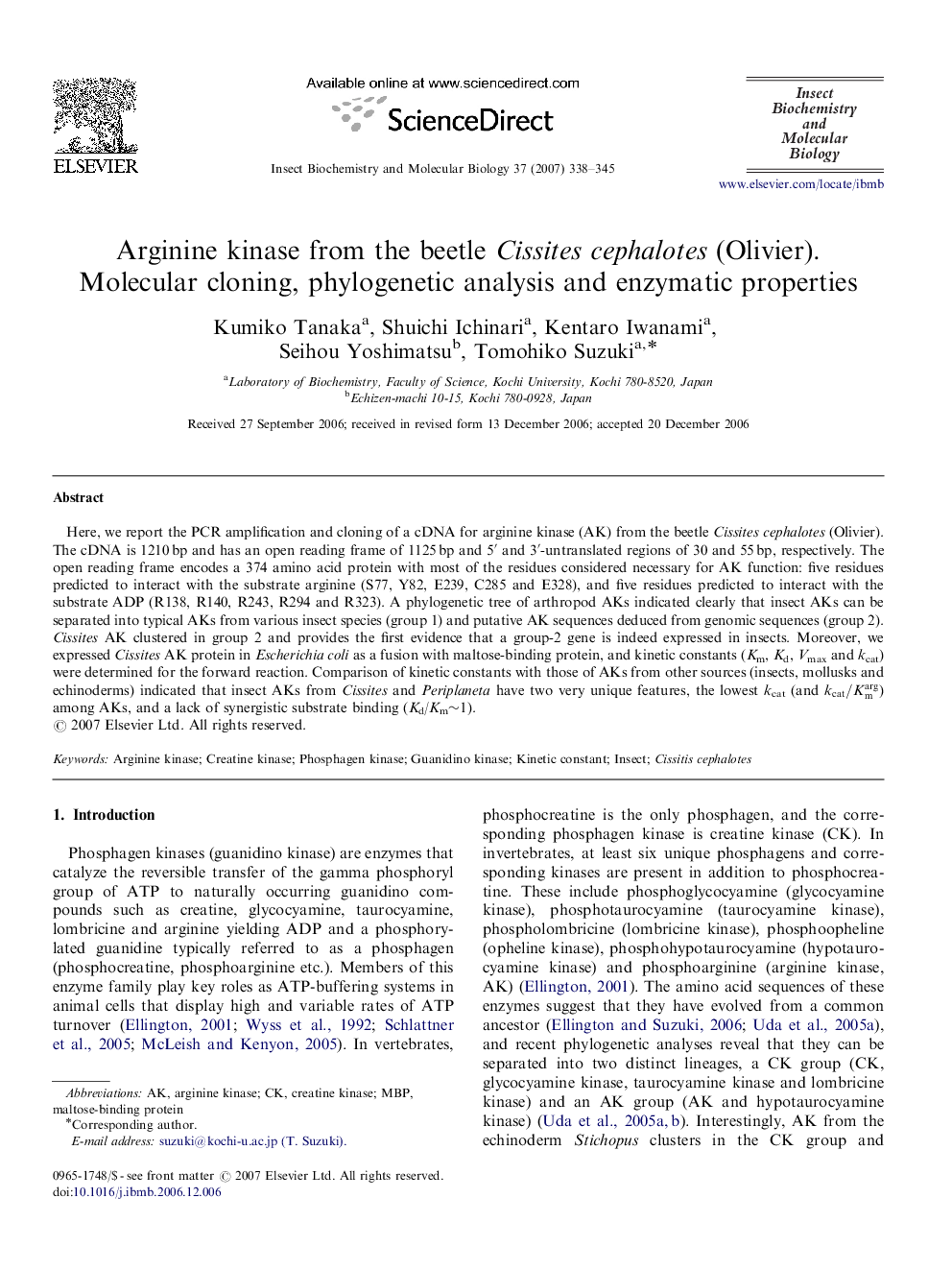| Article ID | Journal | Published Year | Pages | File Type |
|---|---|---|---|---|
| 1983036 | Insect Biochemistry and Molecular Biology | 2007 | 8 Pages |
Here, we report the PCR amplification and cloning of a cDNA for arginine kinase (AK) from the beetle Cissites cephalotes (Olivier). The cDNA is 1210 bp and has an open reading frame of 1125 bp and 5′ and 3′-untranslated regions of 30 and 55 bp, respectively. The open reading frame encodes a 374 amino acid protein with most of the residues considered necessary for AK function: five residues predicted to interact with the substrate arginine (S77, Y82, E239, C285 and E328), and five residues predicted to interact with the substrate ADP (R138, R140, R243, R294 and R323). A phylogenetic tree of arthropod AKs indicated clearly that insect AKs can be separated into typical AKs from various insect species (group 1) and putative AK sequences deduced from genomic sequences (group 2). Cissites AK clustered in group 2 and provides the first evidence that a group-2 gene is indeed expressed in insects. Moreover, we expressed Cissites AK protein in Escherichia coli as a fusion with maltose-binding protein, and kinetic constants (Km, Kd, Vmax and kcat) were determined for the forward reaction. Comparison of kinetic constants with those of AKs from other sources (insects, mollusks and echinoderms) indicated that insect AKs from Cissites and Periplaneta have two very unique features, the lowest kcat (and kcat/Kmarg) among AKs, and a lack of synergistic substrate binding (Kd/Km∼1).
